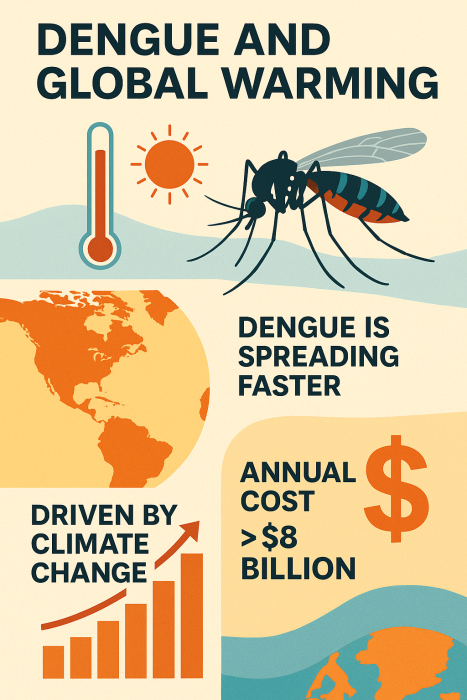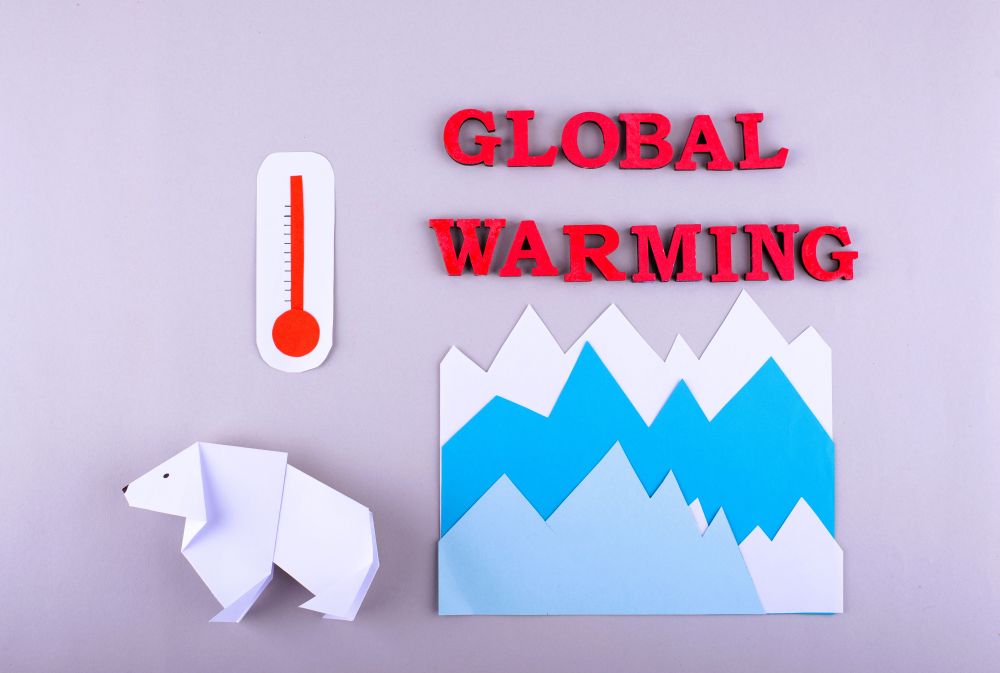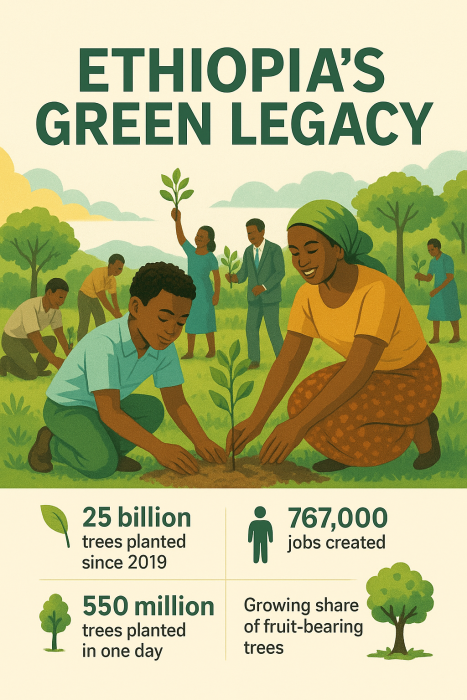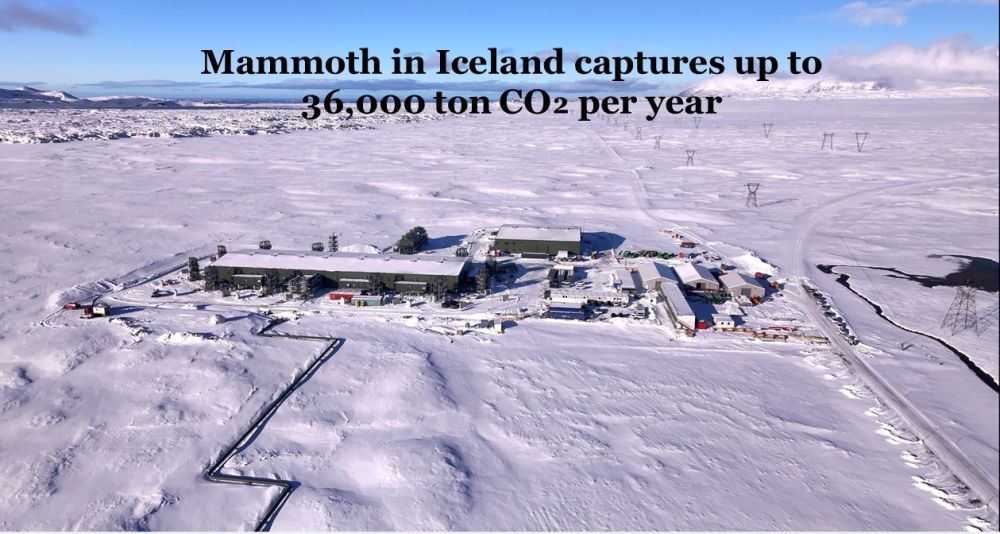45/25 Dengue and Global Warming: A Pressing Connection Requiring Immediate Attention
Posted 3 months ago
EXECUTIVE SUMMARY
Dengue fever, once limited to tropical regions, is now spreading faster because of climate change. Warmer temperatures help mosquitoes breed and transmit the virus more easily, while unpredictable rainfall and events like El Niño create ideal conditions for outbreaks. A study of 14 countries shows dengue epidemics often happen simultaneously across vast areas, proving it is no longer just a local issue. The global cost of dengue exceeds $8 billion annually, hitting healthcare systems, businesses, and tourism. Tackling dengue means addressing mosquito control and the bigger driver: a warming planet.
For years, dengue fever has been a persistent threat in tropical countries, affecting millions and straining healthcare systems, especially in Latin America. However, recent research has revealed that dengue is no longer a regional health issue. It has evolved into a global epidemic, driven by rising global temperatures and shifting weather patterns.
Why Dengue is Spreading Faster?
Dengue spreads through mosquitoes, but climate change gives these insects an upper hand. Warmer temperatures help mosquitoes breed faster, live longer, and spread the virus more easily. At the same time, unpredictable rains create more stagnant water, perfect breeding grounds for mosquitoes. Add El Niño (the weather pattern that disrupts rainfall and heat across the globe), and dengue outbreaks start appearing in multiple countries almost simultaneously.
A recent study examined over 30 years of dengue data from 14 American countries. The findings were striking: major dengue outbreaks happened in sync across vast regions, even thousands of kilometers apart. In some cases, epidemics peaked only months apart in faraway places, showing that climate patterns, not just local conditions, are driving the spread.
A Regional Problem That Crosses Borders
This research shows that dengue isn’t limited to one country. It’s a shared problem across borders, linked to climate change and human travel. If one country has an outbreak, chances are high that neighboring nations will see one, too. That means solutions must go beyond local mosquito control. Countries need to work together, share data, and prepare collectively.
The Business of Disease: Counting the Cost
The economic toll of dengue is staggering. According to the World Health Organization, dengue infects up to 400 million people annually, with the global cost, including hospital bills, lost wages, and reduced productivity, estimated at over $8–9 billion.
For businesses in affected regions, dengue outbreaks mean lost workdays, declining workforce productivity, and heavier healthcare expenses. In tourism-driven economies, news of widespread dengue can even slow down visitor numbers, hitting revenues hard.
If climate change continues to drive dengue into new areas, industries from hospitality to agriculture to insurance will all feel the strain. In short, dengue is not just a public health crisis; it’s a growing economic and business risk.
What This Means for the Future?
As the planet warms, dengue is expected to reach new areas, including places that have never faced mosquito-borne diseases. For governments, this means preparing health systems, improving disease tracking, and most importantly, factoring climate change into public health and economic planning.
The link between dengue and global warming is a wake-up call. It proves climate change is not just about melting ice caps or rising seas; it’s already reshaping our health, economies, and safety.
Take Home Message
Dengue is more than a mosquito problem; it’s a climate and economic situation. Fighting it will take more than insect sprays and hospital care. It will require more decisive climate action, innovative early warning systems, regional teamwork, and business resilience planning.
The mosquito may be small, but its message is huge: our warming planet is putting lives and livelihoods at risk.





